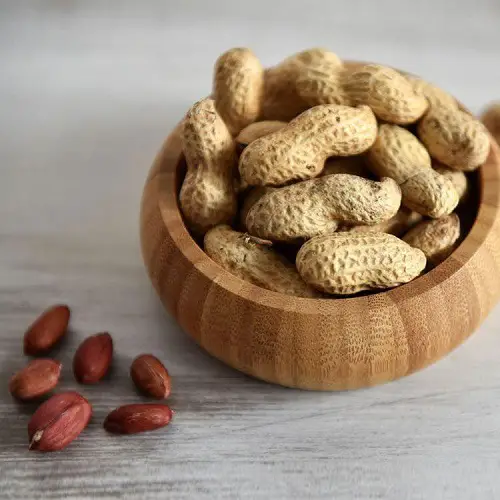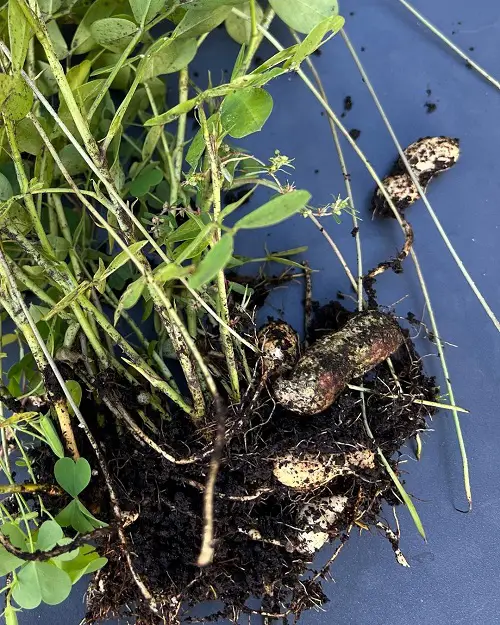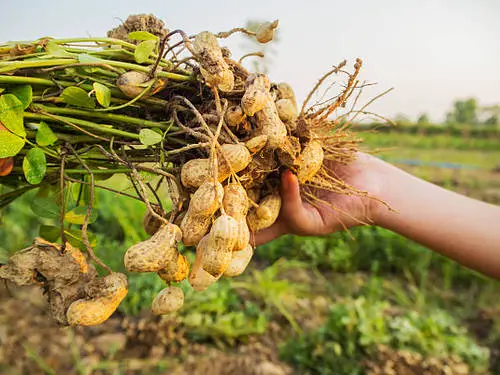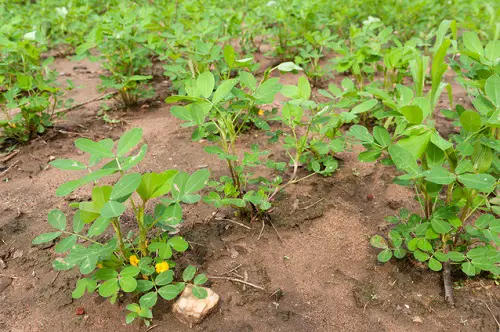Have you always wondered – How Do Peanuts Grow? This article will give you a detailed insight into everything!
Want to know How Do Peanuts Grow? Let’s explore the ins and outs of cultivating these nutritious nuts – from planting to harvesting!
Learn How to Grow Peanuts in Pots
What Are Peanuts?

Peanuts are a type of legume, also called groundnuts, earthnuts, or goobers, and are widely consumed worldwide. The peanut plant is native to South America but is now grown in many parts of the world, including the United States, China, and India.
Peanuts are a good source of protein, healthy fats, fiber, and a variety of vitamins and minerals, including vitamin E, magnesium, and potassium. They can be eaten raw, roasted, or as an ingredient in many dishes, such as peanut butter, peanut oil, and various snacks and desserts.
Peanuts are also used in the manufacturing of many products, including cosmetics, biofuels, and animal feed. They are a versatile and important crop that provides both nutritional and economic benefits to many people around the world.
Learn Where Peanuts Come From
How Do Peanuts Grow?
Peanuts, also known as groundnuts, are legumes that grow underground. The peanut plant grows small yellow flowers that eventually develop into a pod. The pod then grows downward into the soil, where the peanut kernel matures.
During the growing season, the peanut plant sends out runners, which are thin stems that extend along the soil surface. These runners form small pegs that eventually penetrate the soil and become the developing peanut pods.
Once the pods are fully grown and matured, they get ready for harvest. Farmers typically wait until the plants start to yellow and dry out before digging them up. The peanuts are then removed from the plant, dried, and stored for later use.
Peanuts require warm temperatures and a long growing season, typically 120-150 days, to reach maturity. They also require well-draining soil and regular watering. With proper care and attention, peanuts can be a rewarding crop to grow in the home garden.
Requirements to Grow the Best Peanuts

- Sunlight: Peanuts love basking in the sun! They need at least 6 to 8 hours of direct sunlight each day, so make sure to plant them in a sunny spot.
- Water: Keep the soil moist but not waterlogged by watering deeply once or twice a week, depending on the weather.
- Soil: Peanuts prefer loose and friable soil that drains well. It’s important to prepare the soil before planting by tilling it deeply and adding organic matter.
- Temperature: They enjoy warm weather between 70 and 90 degrees Fahrenheit (21 – 32 °C). They need a frost-free growing season of at least 120 to 150 days to mature.
- Fertilizer: Use a balanced fertilizer, such as a 10-10-10 or 12-12-12, once in 5-8 weeks. You can also add compost or aged manure to the growing medium before planting.
- Pests and Diseases: Common pests include aphids, thrips, and spider mites, which can be controlled with insecticidal soap or neem oil. Diseases such as leaf spots and pod rot can be prevented by practicing good crop rotation and avoiding overhead irrigation.
How Long Do Peanuts Take to Grow?

Peanuts take approximately 3-4 months to grow from planting to harvest. The growth cycle starts when peanut seeds are planted into the soil.
- After planting the seeds, a small plant emerges from the soil 2-3 weeks later. The plant then continues to grow and develop leaves and stems.
- After a few more weeks, the plant will begin to produce flowers. The flowers will then pollinate and produce fruit, which is the peanut pod.
- The pods will continue to grow and mature over the next few weeks until they are ready to be harvested. Once harvested, the peanuts can be stored and eaten.
How Big Do Peanut Plants Grow?
Peanut plants can grow up to 18-20 inches in height and spread anywhere from 12 inches to 24 inches. However, depending on the growing conditions, the plant can grow shorter or taller.



